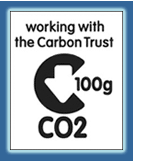Get started reducing greenhouse gases
 Last year the U.S. emitted seven billion metric tonnes of greenhouse gases (CO2 equivalent). You could allocate most of that to each of us as consumers (as is done by the carbon footprint calculator in this post). After all, most of it was generated while making and delivering things for consumers. Consumer choices clearly affect global warming pollution.
Last year the U.S. emitted seven billion metric tonnes of greenhouse gases (CO2 equivalent). You could allocate most of that to each of us as consumers (as is done by the carbon footprint calculator in this post). After all, most of it was generated while making and delivering things for consumers. Consumer choices clearly affect global warming pollution.On the other hand, most of those emissions were produced by industrial and commercial activities. About 1.2 billion tonnes were generated by energy use in residences, and probably another half-billion tonnes by non-commercial transportation (travel by consumers that wasn't commuting to work).
Of the 7 billion tonnes CO2e the U.S. poured out last year, about 5.4 billion was emitted by businesses, offices, factories, farms, commercial transportation, and related business activities. (This does not include the indirect emissions associated with imported products or raw materials.) U.S. businesses had about 136.7 million employees in 2006, so that's roughly 40 tonnes per employee. You can do a first approximation of your firm's emissions.
40 tonnes CO2e per employee
These emissions came mainly from the following sources associated with your business:- Generation and delivery, or on-site generation of electricity, steam and process heat you used in your operations, including offices and production.
- Transportation used by your employees to get to and from their jobs.
- Energy embodied in water, paper and other supplies used at your facilities.
- Combustion of liquid fuels at your sites.
- Delivery of raw materials to your facilities.
- Distribution of finished products to your customers.
- Emissions from waste from your offices and production sites.
- Business travel by your employees, including sales calls.
Often the wasted energy spotted in such a walkthrough can amount to 10-20% of total energy use in a building. That goes to the bottom line. And it reduces greenhouse gas emissions immediately. These early savings may pay for professional assistance with more complicated analysis. You're on your way.





